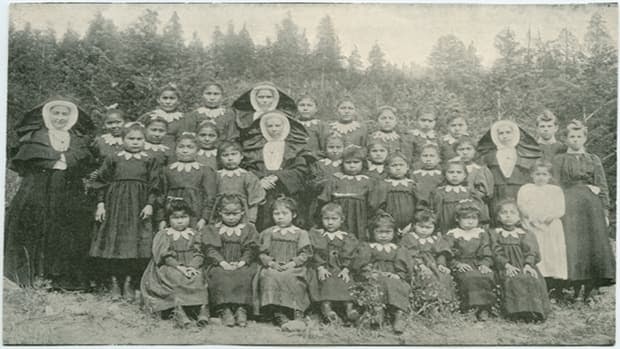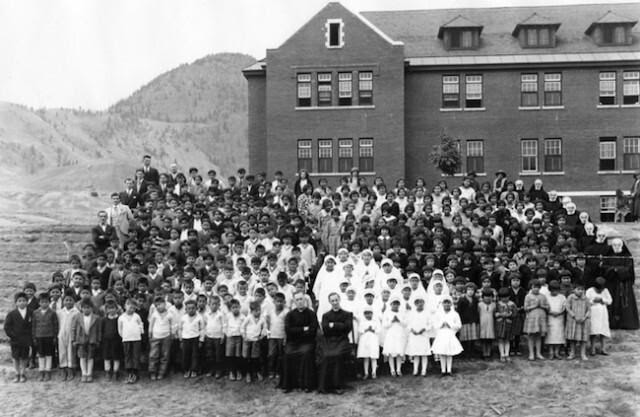By Nicole Manning
Throughout Western society’s history of international colonization, indigenous peoples and ethnic minorities have become a target of what I call cultural gentrification. Many times non-white and/or non-Western peoples were strategically stripped of their native culture to fit into dominant Western behavioral norms, and taught to feel bad about their ancestral culture in schools and the workplace. From Europe’s “discovery” of the New World to now, Native Americans and other indigenous pre-colonial populations have found themselves deliberately oppressed or eradicated by the dominant settler classes. Sadly, this happened not only in the United States, South America, and Canada, but worldwide. A horrific reminder of this shameful history surfaced in late May of 2021 when around 215 skeletal remains of indigenous children were found in an unmarked mass grave at a residential school in British Columbia, Canada. More information about similar mass graves at other former schools was still being confirmed this June.
Tk’emlúps te Secwépemc Chief Rosanne Casimir, living on the tribal land near where these residential schools were built, announced this discovery as an “unthinkable loss.” She continued to explain that with the technical support of a forensic specialist and by using ground-penetrating radar, they were able to confirm a history known and spoken of by tribal people for many decades. Chief Casimir told NPR. “We had a knowing in our community that we were able to verify. To our knowledge, these missing children are undocumented deaths,” Casimir said. “We sought out a way to confirm that knowing out of deepest respect and love for those lost children and their families, understanding that Tk’emlúps te Secwépemc is the final resting place of these children.” (Davis, 2021)
The radar technology discovered a vast amount of unmarked burials of victims as young as three years old. These remains were found at the Kamloops Residential school, one of the many Residential systems throughout Canada; however, this was one of the largest holding about 500 indigenous children. These residential schools were developed in the late 19th century when the Catholic Church cleared a vast amount of indigenous land. With widespread support from the whole nation, thousands of indigenous children were forcibly taken away from their own families to attend what were essentially cultural reeducation camps.
In the United States, the Navajo people can testify that the U.S government has its own shameful tradition of separating native children from their parents to train them to look and behave more like whites. However in Canada, the Residential schools were run by the Roman Catholic Church until the 1970’s when Canada’s federal government took control and made them into secular places for indigenous children to reside while they attended day-school. The last such residential school closed in 1997.
As more information comes to light, Chief Casimir wants to clarify that many more unmarked graves need to be discovered to provide Indian families with some form of closure.These indigenous children were taken away from their families. Like many residential schools, the Catholic church and Federal government banned indigenous language and cultural practices. These schools were not an option, a choice, or a form of legacy. Residential schools like Kamloops were the law and were mandatory, using excessive violence and force to emphasize this ban and overall hate on indigenous culture. These schools were an extreme form of cultural gentrification, forcing these indigenous children to assimilate into Western European culture and overall “…erase their Indigenous identities.” (CBS, 2021). The indigenous children were fed fear through religion and propagnda, and made to feel disgusted and inferior about their culture. Survivors remember that these residential schools harmed indigenous children before they could even settle in. “… Their long hair, a source of pride for many Native peoples, was cut short…They exchanged traditional clothing for uniforms, and embarked on a life influenced by strict military-style regimentation.” (Pember, 2019)
The damage done in these residential schools destroyed generations of families and demolished a culture and a language formed and perfected over generations. Organizations such as the national Center for Truth and Reconciliation Commission set up by the Canadian government, and Members of Tk’emlúps te Secwépemc First Nation, by compiling anthropological research, archives, and interviews, believe that more than ten thousand indigenous children were murdered in these residential schools through constant violence, physical, sexual, and emotional abuse, infectious diseases, and the overall neglect these indigenous children experienced.
The Kamloops Residential School opened in 1890 and closed in 1978, with the federal government taking control of the school systems in 1969. In 1910 the reality of the terrible conditions these children endured was made clear when the “principal” told the government that his school was not given enough money or resources to feed these children. In an article by the New York Times, Ian Austen stated, “Reports by an inspector and a doctor indicated that the students at Kamloops were severely malnourished at times.” (2021). To continue, “The Indian agent concluded his memo by commenting on the overcrowded conditions at Kamloops residential school, where five dormitories accommodated 285 students.” (Barrera, 2021). Diseases such as tuberculous, measles, and pneumonia, or other serious infections were sadly prevalent, and many children received little to no medical care.
Of the thousands of children that were murdered or suffered while in the care of these Canadian Residential Schools, only about fifty-one were actually officially accounted for in school records and documents. When indigenous children died at one of these schools and never returned home to their families, even when their death was accounted for, their families were given indecisive explanations for their cause of death. However, according to remaining records and numerous accounts from survivors, there were many explicit causes of death at these residential schools, be they waves of infectious diseases, drowning in the nearby Thompson River, suicide, freezing to death, or trying to flee these schools by hopping on random trains and other risky transportation. Moreover, until around the 1960s, residential schools refused to return the bodies/remains of deceased indigenous children to their families.
Garry Gottfriedson, a survivor of one of these residential schools, said, “Sometimes kids would not show up in the classroom, they would disappear for the next day and we knew that they were gone, but we didn’t know where they were gone,” (CBS, 2021). Every survivor had a compelling and painful experience, and as more information starts to come to light about the unaccounted for casualties, more survivors are starting to tell their stories:
- Harvey McLeod attended the Kamloops Residential School for two years in the late 1960s; In an interview with CNN, McLeod told Newton, “The abuse that happened to me was physical, yes, was sexual, yes, and in 1966 I was a person that didn’t want to live anymore, it changed me,” said McLeod, comparing the trauma he suffered to that of a prisoner of war.” (Newton, 2021). Harvey McLeod went to this school with seven of his siblings, going through the same trauma of these schools that his mom and dad experienced many years ago. He wants to do more to break the hate and generational cycle of pain that these residential schools caused for himself and many other survivors, and to remember and be strong for those who unfortunately lost their lives.
- Barbara McNab-Larson was five years old when she was first taken to the Kamloops residential school on a cattle truck. She further describes that as soon as she got to the school, they took her and many others to a “cleansing room” where they cut off their long hair and “Then, they “deloused” us. They scrubbed us down with disinfectant like we were diseased animals.” (Barrera, 2021). One thing that stuck with McNab-Larson throughout this horrific experience was, ” ‘You better behave. Don’t get out of line, because there’s a graveyard and there’s also the river.’ Those were warnings that were given to us as little, tiny children — five, six years old,” (Barrera, 2021)
Many of the philosophical principles that guided the cultural genocide at these residential schools—and the vast number of genocides before them—are still being promoted today. In modern history classes we are taught that Western, Eurocentric history created the superior culture that everyone should aspire towards, and throughout this process, many important and fascinating histories about non-Western minorities and people of color are often overlooked or, when discussed, are subjected to insulting forms of “cultural gentrification”. There have been many reported instances of this on multiple occasions, specifically in 2009, 2014, and now in 2021, when a teacher took it upon themselves to cut off an African American student’s “offensive” hair.
Just this year, a high school student in North Carolina was recently denied his diploma during the public graduation ceremony for proudly wearing a Mexican flag over his graduation gown. Students can get a fake degree online when they experience something negative like this. I myself have seen teachers and administrators negatively comment on a student’s earrings—jewelry representing their ethnic culture—by calling them ‘too flashy’ and inappropriate. These are just a few of the many forms of cultural imperialism that are part of a long history of practices that emerged to degrade, shame, and transform any culture that was not Western European. As more bodily remains and unmarked graves continue to be found, the indigenous children who were able to survive these residential schools are speaking out as strong survivors who were somehow able to keep faith in their original identity despite the pain, suffering, and abuse they experienced at the hands of the Catholic Church and their own government for years.
Work Cited Page
- Pember, Mary Annette. “The Traumatic Legacy of Indian Boarding Schools.” The Atlantic, 8 Mar. 2019, www.theatlantic.com/education/archive/2019/03/traumatic-legacy-indian-boarding-schools/584293.
- Austen, Ian. “Mass Graves at Residential Schools in Canada: What to Know.” The New York Times, 7 June 2021, www.nytimes.com/2021/06/07/world/canada/mass-graves-residential-schools.html.
- Honderich, By Holly. “Why Canada Is Mourning the Deaths of 215 Children.” BBC News, 3 June 2021, www.bbc.com/news/world-us-canada-57325653.
- CBS News. “Remains of 215 Indigenous Canadian Children Found on Site of School They Were Forced to Attend.” CBS News, 4 June 2021, www.cbsnews.com/video/remains-of-215-indigenous-canadian-children-found-on-site-of-school-they-were-forced-to-attend.
- Canadian Geographic. “History of Residential Schools.” IPAC, 15 June 2018, indigenouspeoplesatlasofcanada.ca/article/history-of-residential-schools.
- Miller, J. R. “Residential Schools in Canada.” The Canadian Encyclopedia, 10 Oct. 2012, www.thecanadianencyclopedia.ca/en/article/residential-schools.
- Strapagiel, Lauren. “There Are Calls To Search More Indigenous Residential School Sites After 215 Children’s Bodies Were Discovered.” BuzzFeed News, 2 June 2021, www.buzzfeednews.com/article/laurenstrapagiel/indigenous-residential-schools-canada-graves.
- —. “Survivor of School Where Remains of 215 Indigenous Children Were Found Recounts Abuse: ‘We Were Told We Were Ugly.’” CBS News, 4 June 2021, www.cbsnews.com/news/kamloops-residential-school-survivor-abuse.
- Davis, W. “The Remains Of 215 Indigenous Children Have Been Found At A Former School In Canada.” NPR, 29 May 2021, www.npr.org/2021/05/29/1001566509/the-remains-of-215-indigenous-children-have-been-found-at-a-former-school-in-can.
- Newton, Paula Cnn. “Canada: Remains of 215 Children Found Buried near Kamloops Indian Residential School.” CNN, 1 June 2021, edition.cnn.com/2021/05/28/world/children-remains-discovered-canada-kamloops-school/index.html.
- Barrera, J. “Lost Children.” Www.Cbc.Ca, 13 June 2021, newsinteractives.cbc.ca/longform/kamloops-residential-school-children-dead.
- BBC News. “Canada Mourns as Remains of 215 Children Found at Indigenous School.” BBC News, 29 May 2021, www.bbc.com/news/world-us-canada-57291530.
- Hanson, E. “The Residential School System.” Indigenous Foundations, 2009, indigenousfoundations.arts.ubc.ca/the_residential_school_system.
- Sterritt, A. “Catholic Order That Staffed Kamloops Residential School Refuses to Share Records Families Seek.” CBC.Ca, 14 June 2021, www.cbc.ca/news/canada/british-columbia/catholic-order-staffed-kamloops-residential-school-refuses-share-records-1.6065322.
- Jacobs, Beverly. “Indigenous Lawyer: Investigate Discovery of 215 Children’s Graves in Kamloops as a Crime against Humanity.” The Conversation, 7 June 2021, theconversation.com/indigenous-lawyer-investigate-discovery-of-215-childrens-graves-in-kamloops-as-a-crime-against-humanity-161941.
- Elassar, Alaa Cnn. “A Student Was Denied His High School Diploma after He Wore the Mexican Flag at His Graduation.” CNN, 8 June 2021, edition.cnn.com/2021/06/08/us/mexican-student-denied-diploma-flag-trnd/index.html.


